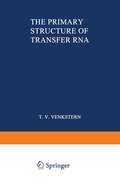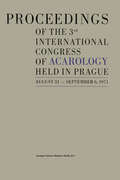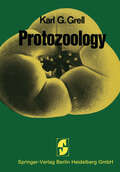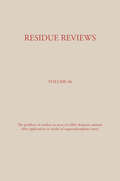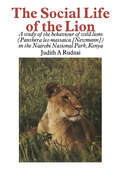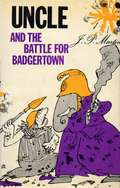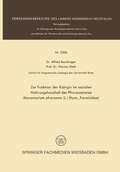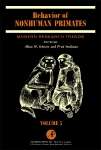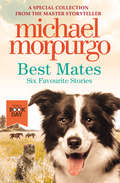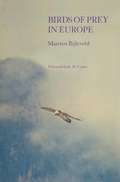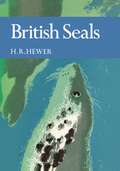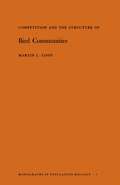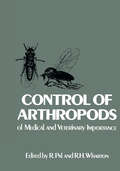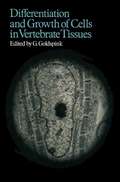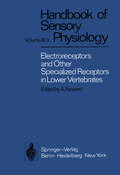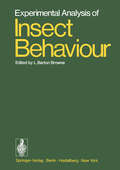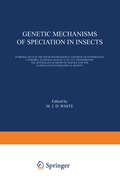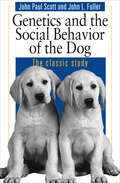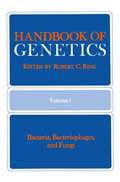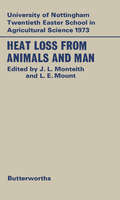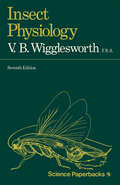- Table View
- List View
The Primary Structure of Transfer RNA
by Tat Yana VenksternThe study of the primary structure of nucleic acids, i. e. , the determination of the nucleotide sequence in ribosomal, transfer, and messenger types of RNA and in DNA, is an essential preliminary to the attempt to correlate the structures of these compounds with their functions. This is one of the most urgent problems in molecular biology, for until it is solved it is im possible to understand fully the mechanisms of fundamental living processes. Research has naturally tended to concentrate on the nucleic acids of smallest molecular weight, namely the transfer RNAs, and tremendous progress has been made in recent years in the unraveling of their structure. In 1958-1959, when structural investigation was still in its infancy, it was even doubted whether the structure of any transfer RNA could be deter mined. No methods of isolating homogeneous preparations were available, and it was uncertain whether the very slight physical and chemical differences between tRNAs of different specificity would be sufficient to allow successful fractionation. When the first enriched preparations were obtained, there arose the problem of whether it was possible to determine the nucleotide sequence having regard to the limited number of heterogeneous structural elements present in tRNA. These doubts were resolved in 1965, when the structure of the first nucleic acid, alanine-specific transfer RNA, was unraveled in Holley's laboratory.
Proceedings of the 3rd International Congress of Acarology
by M. Daniel B. RosickýHeld in Prague, August 31-September 6, 1971
Protozoology
by Karl Gottlieb GrellWhen I prepared the first German edition of this book in 1955, it was my intention to acquaint biologists in my country with the new and exciting results being obtained on the other side of theAtlantic Ocean (incl. the English Channel). In the meantime, especially after publication of the second German edition in 1968, Dr. Konrad F. Springer and many colleagues, too, suggested that I should prepare an English version. Though this was the exact opposite of my original intention, I finally agreed despite the risks involved. Since 1968 our knowledge in Protozoology increased considerably. Though I tried to concentrate the text as much as possible, an enlargement of up to pages 554 was unavoidable. Many figures have been changed, replaced and added. Altogether their number increased from 422 to 437. In my opinion, it is only a matter of time before the "true" protozoologists dis appear. There will be cell biologists, biochemists, geneticists and others working with certain Protozoa, but very few who are interested in the group as a whole, their morphological and physiological diversity, their various types of reproduction and their relationships to other groups of organisms. Even at the present time, the Society of Protozoologists, comprising more than thousand members, consists for the most part of specialists who concentrate their efforts specifically upon Chlamy domonas, Amoeba, Plasmodium, Tetrahymena or some other protozoans.
Residue Reviews: Residues of Pesticides and Other Contaminants in the Total Environment (Residue Reviews/Rückstandsberichte)
by Kurt Kaemmerer Siegfried BuntenkötterThe Social Life of the Lion: A study of the behaviour of wild lions (Panthera leo massaica [Newmann]) in the Nairobi National Park, Kenya
by J.A. RudnaiTHE HABITAT Nairobi National Park lies to the south-southeast of the capital of Kenya, Nairobi, where the Athi Plains meet the Eastern escarpment of the Rift Valley. These plains form part of the semi-arid highland plateau lying between the coast and the Rift Valley. Both the city itself, and the Park bordering it, are a meeting place of two generally distinct types of landscape and climate. While to the east-southeast are semi-arid plains with grasslands and scattered trees, the western-north western parts are higher, hilly, cooler, more humid and support lush forests. The combination of latitude-a little over one degree south of the Equator -and altitude-average of 1600 m. (5000-5500 ft.) -combine to give Nairobi a most equable climate where the temperature varies during the year between about 11 degrees and 27 degrees centigrade (mean minimum and mean maximum for eight years). However, considerable changes are usually experienced within each day and a rise from 14 degrees C at 0600 hours to 22 degrees at 1100 hours is not unusual. Nairobi Park has a unique concentration of wild animals living in their natural habitat less than 10 km. from the centre of a modern city of half a million people. The only interference with the natural course of events in the Park is that normally required for the proper management of a game park, such as maintenance of roads and dams, and, in this particular case, partial fencing towards the city.
Uncle and the Battle for Badgertown
by J. P. MartinThe sixth book about Uncle, the millionaire elephant who has a B.A. degree, begins with the Badgertown police seizing the belongings of Beaver Hateman, Uncle’s enemy, because he has refused to pay his rates. And it ends with a tremendous fight, using egg bombs and duck bombs, between the Hateman gang and Uncle’s supporters for possession of the Town Hall, and for the Great Mace, chief treasure of Badgertown.With the help of a new follower, the dog Brass – who has a bark that makes the ears tingle – Uncle continues the exploration of the great castle of Homeward. He opens the baffling Closed Gallery, discovers the fabulous Jewel Room and visits Mrs Witch, who is threatening the trade of Wizard Blenkinsop.The most hilarious adventures come at Christmas ( the time of year that the author, the late J.P. Martin, loved best) when Uncle goes shopping and attends Dr Lyre’s end-of-term party at the Academy. There is a sing-song round a Christmas tree so big that the guests can climb up into it to get their presents. Of course there is a mysterious gate-crasher hiding in the topmost branches. Who?
Zur Funktion der Königin im sozialen Nahrungshaushalt der Pharaoameise Monomorium pharaonis (Forschungsberichte des Landes Nordrhein-Westfalen)
by Alfred Buschinger Werner KloftBehavior of Nonhuman Primates: Modern Research Trends (ISSN #Volume 5)
by Allan M. Schrier Fred StollnitzBehavior of Nonhuman Primates: Modern Research Trends, Volume 5 is a collection of papers on research trends in the study of the various aspects of primate behavior. Chapters in the book discuss topics on the history of the study of cognitive processes in primates; ways in which visual stimuli in monkeys are perceived, stored in memory, and retrieved; and behavior of prosimians. The book will be of value to primatologists, psychologists, and zoologists.
Best Mates
by Michael MorpurgoA collection of six magical and heart-warming animal stories, specially for World Book Day, by the nation’s favourite storyteller.
British Seals (Collins New Naturalist Library #57)
by H. R. HewerA comprehensive account of the seal’s migratory patterns, methods of hunting and patterns of reproduction.
Competition and the Structure of Bird Communities. (Monographs in Population Biology #92)
by Martin L. CodyProfessor Cody's monograph emphasizes the role of competition at levels above single species populations, and describes how competition, by way of the niche concept, determines the structure of communities. Communities may be understood in terms of resource gradients, or niche dimensions, along which species become segregated through competitive interactions. Most communities appear to exist in three or four such dimensions. The first three chapters describe the resource gradients (habitat types, foraging sites, food types), show what factors restrict species to certain parts of the resource gradients and so determine niche breadths, and illustrate the important role of resource predictability in niche overlap between species for resources they share. Most examples are drawn from eleven North and South American bird communities, although the concepts and methodology are far more general. Next, the optimality of community structure is tested through parallel and convergent evolution on different continents with similar climates and habitats, and the direct influence of competitors on resource use is investigated by comparisons of species--poor island communities to species-rich mainland ones. Finally, the author discusses those sorts of environments in which the evolution of one species--one resource set is not achieved, and where alternative schemes of resource allocation, often involving several species that act ecologically as one, must be followed.
Competition and the Structure of Bird Communities. (MPB-7), Volume 7 (PDF)
by Martin L. CodyProfessor Cody's monograph emphasizes the role of competition at levels above single species populations, and describes how competition, by way of the niche concept, determines the structure of communities. Communities may be understood in terms of resource gradients, or niche dimensions, along which species become segregated through competitive interactions. Most communities appear to exist in three or four such dimensions. The first three chapters describe the resource gradients (habitat types, foraging sites, food types), show what factors restrict species to certain parts of the resource gradients and so determine niche breadths, and illustrate the important role of resource predictability in niche overlap between species for resources they share. Most examples are drawn from eleven North and South American bird communities, although the concepts and methodology are far more general. Next, the optimality of community structure is tested through parallel and convergent evolution on different continents with similar climates and habitats, and the direct influence of competitors on resource use is investigated by comparisons of species--poor island communities to species-rich mainland ones. Finally, the author discusses those sorts of environments in which the evolution of one species--one resource set is not achieved, and where alternative schemes of resource allocation, often involving several species that act ecologically as one, must be followed.
Differentiation and Growth of Cells in Vertebrate Tissues
by G. GoldspinkIn recent years a new field of study has arisen called developmental biology. The term developmental biology is really a new name for embryology; it is, however, used to denote the molecular approach to the study of developing systems. In this book we have tried wherever possible to blend the older information of classical embryology and in particular organogeny with the newer concepts of developmental biology. The original intention was to cover all the tissues of the body in this book. However, it soon became obvious that it was not possible to do this within one volume. Therefore we decided to have two general chapters, one on the basic concepts of cellular development and an other on the ageing of cells (this being considered part of the normal growth process). In addition to these two general chapters we have included chapters on some of the major tissues. These were chosen not just to illustrate the points made in the general chapters but because there is enough information available on the development of these tissues for the expert in that field to present a good, readable account. It is hoped that at a later date when more information is available, we will be able to extend this work, probably as several volumes, and to include the other tissues of the body which are not dealt with in this volume.
Electroreceptors and Other Specialized Receptors in Lower Vertrebrates (Handbook of Sensory Physiology #3 / 3)
by T.H. Bullock A. Fessard R.H. Hartline A.J. Kalmijn P. Laurent R.W. Murray H. Scheich E. Schwartz T. SzaboThe originality of this volume is to reveal to the reader the fascination of some unfamiliar sensory organs that are sometimes ignored and often misunderstood. These receptors have only recently been identified and their functional specificity is in some cases still a matter for discussion. The four classes of sensory organs considered here differ widely from one another in many respects. One might even say that the only thing they have in common is that they belong to cold-blooded vertebrates. These classes are: 1. the directionally sensitive lateral-line mechanoreceptors of fishes and amphi bians (Chapter 7); 2. the pseudobranchial organs of some teleosts, equipped with pressoreceptors and at least three other types of receptors (osmo- and chemoreceptors) (Chapter 8); 3. the infrared-sensitive pit organs of some snake families (Chapter 9) ; 4. the various kinds of electroreceptors found in several marine and freshwater fish families (Chapters 2 to 6). The first three classes of receptors mentioned above thus rate only one chapter each, whereas five chapters are devoted to the electroreceptors. Electroreception has aroused enormous interest among physiologists in specialties ranging from molecular biology to animal behavior. The resulting quantity of research and discussion fully justifies this disproportion. However, it cannot be denied that the contents of the volume must appear unbalanced and heterogeneous, yet it should not be perceived as a mere juxtaposition of particular and unrelated cases.
Experimental Analysis of Insect Behaviour
by L. B. BrowneThis volume has come about as a direct result of a Symposium entitled "Experimental Analysis of Insect Behaviour" which was an important con tribution to the 14 International Congress of Entomology held in Canberra, Australia, in August 1972 under the joint sponsorship of the Australian Academy of Science and the Australian Entomological Society. It is not, however, strictly Symposium proceedings. I have included, in this volume contributions from several workers who had to withdraw from the Symposium at a fairly late stage. Furthermore, quite intentionally, a number of the contributions bear only a general relationship to the papers given at the Congress. To permit this; the deadline for contribu tions was set at some six months after the Symposium. I imposed no restrictions on the form of the contributions. I did, however, indicate that speculative reviews highlighting the author's own recent research or that of his immediate colleagues would be particularly acceptable, and a number of the contributors have taken the opportunity to write this kind of paper. Several contributors, notably those whose task it was to give more general papers in the Symposium itself, have written reviews of somewhat greater scope.
Genetic Mechanisms of Speciation in Insects: Symposia held at the XIVth International Congress of Entomology, Canberra, Australia August 22–30, 1972, sponsored by the Australian Academy of Science and the Australian Entomological Society
by M. J. D. WhiteTwo Symposia on speciation in insects held at the Fourteenth International Congress of Entomology (Canberra, Australia, August 22-30, 1972) are included in this volume. The first, on the more general topic of Genetic Analysis of Speciation Mechanisms, includes four papers on speciation in various groups of Diptera and Orthopteroid insects. The second symposium was devoted to the topic of Evolution in the Hawaiian Drosophilidae; it deals with the explosive speciation of a group of flies with specialized ecological requirements in the complex ecolOgical habitats provided by a recent tropical volcanic archipelago. The Hawaiian Symposium, organized by Professor D. Elmo Hardy, is the latest outcome of a major collaborative research project involving over 20 scientists and about 125 technical assistants over a period of ten years. Some recent books on evolution have taken the standpoint that the funda mental genetic mechanism of speciation is relatively uniform and stereotyped and, in particular, that the 'allopatric' model of its geographic component is universally valid. Certainly, this has been a rather generally accepted viewpoint on the part of students of vertebrate speciation. Workers on speciation in insects have tended, in general, to be less dogmatic and more willing to consider a variety of alternative models of speciation. Thus, in the present volume, several contributions adopt viewpoints which are unorthodox or novel. Only time will tell whether their conclusions will turn out to have been soundly based.
Genetics and the Social Behaviour of the Dog
by John Paul Scott John L. FullerThe classic study of dog behavior gathered into one volume. Based on twenty years of research at the Jackson Laboratory, this is the single most important and comprehensive reference work on the behavior of dogs ever complied. "Genetics and the Social Behavior of the Dog is one of the most important texts on canine behavior published to date. Anyone interested in breeding, training, or canine behavior must own this book."—Wayne Hunthausen, D.V.M., Director of Animal Behavior Consultations "This pioneering research on dog behavioral genetics is a timeless classic for all serious students of ethology and canine behavior."—Dr. Michael Fox, Senior Advisor to the President, The Humane Society of the United States "A major authoritative work. . . . Immensely rewarding reading for anyone concerned with dog-breeding."—Times Literary Supplement "The last comprehensive study [of dog behavior] was concluded more than thirty years ago, when John Paul Scott and John L. Fuller published their seminal work Genetics and the Social Behavior of the Dog."—Mark Derr, The Atlantic Monthly "Genetics and the Social Behavior of the Dog is essential reading for anyone involved in the breeding of dogs. No breeder can afford to ignore the principles of proper socialization first discovered and articulated in this landmark study."-The Monks of New Skete, authors of How to Be Your Dog's Best Friend and the video series Raising Your Dog with the Monks of New Skete.
Genetics and the Social Behaviour of the Dog
by John Paul Scott John L. FullerThe classic study of dog behavior gathered into one volume. Based on twenty years of research at the Jackson Laboratory, this is the single most important and comprehensive reference work on the behavior of dogs ever complied. "Genetics and the Social Behavior of the Dog is one of the most important texts on canine behavior published to date. Anyone interested in breeding, training, or canine behavior must own this book."—Wayne Hunthausen, D.V.M., Director of Animal Behavior Consultations "This pioneering research on dog behavioral genetics is a timeless classic for all serious students of ethology and canine behavior."—Dr. Michael Fox, Senior Advisor to the President, The Humane Society of the United States "A major authoritative work. . . . Immensely rewarding reading for anyone concerned with dog-breeding."—Times Literary Supplement "The last comprehensive study [of dog behavior] was concluded more than thirty years ago, when John Paul Scott and John L. Fuller published their seminal work Genetics and the Social Behavior of the Dog."—Mark Derr, The Atlantic Monthly "Genetics and the Social Behavior of the Dog is essential reading for anyone involved in the breeding of dogs. No breeder can afford to ignore the principles of proper socialization first discovered and articulated in this landmark study."-The Monks of New Skete, authors of How to Be Your Dog's Best Friend and the video series Raising Your Dog with the Monks of New Skete.
Genetics and the Social Behaviour of the Dog
by John Paul Scott John L. FullerThe classic study of dog behavior gathered into one volume. Based on twenty years of research at the Jackson Laboratory, this is the single most important and comprehensive reference work on the behavior of dogs ever complied. "Genetics and the Social Behavior of the Dog is one of the most important texts on canine behavior published to date. Anyone interested in breeding, training, or canine behavior must own this book."—Wayne Hunthausen, D.V.M., Director of Animal Behavior Consultations "This pioneering research on dog behavioral genetics is a timeless classic for all serious students of ethology and canine behavior."—Dr. Michael Fox, Senior Advisor to the President, The Humane Society of the United States "A major authoritative work. . . . Immensely rewarding reading for anyone concerned with dog-breeding."—Times Literary Supplement "The last comprehensive study [of dog behavior] was concluded more than thirty years ago, when John Paul Scott and John L. Fuller published their seminal work Genetics and the Social Behavior of the Dog."—Mark Derr, The Atlantic Monthly "Genetics and the Social Behavior of the Dog is essential reading for anyone involved in the breeding of dogs. No breeder can afford to ignore the principles of proper socialization first discovered and articulated in this landmark study."-The Monks of New Skete, authors of How to Be Your Dog's Best Friend and the video series Raising Your Dog with the Monks of New Skete.
Genetics and the Social Behaviour of the Dog
by John Paul Scott John L. FullerThe classic study of dog behavior gathered into one volume. Based on twenty years of research at the Jackson Laboratory, this is the single most important and comprehensive reference work on the behavior of dogs ever complied. "Genetics and the Social Behavior of the Dog is one of the most important texts on canine behavior published to date. Anyone interested in breeding, training, or canine behavior must own this book."—Wayne Hunthausen, D.V.M., Director of Animal Behavior Consultations "This pioneering research on dog behavioral genetics is a timeless classic for all serious students of ethology and canine behavior."—Dr. Michael Fox, Senior Advisor to the President, The Humane Society of the United States "A major authoritative work. . . . Immensely rewarding reading for anyone concerned with dog-breeding."—Times Literary Supplement "The last comprehensive study [of dog behavior] was concluded more than thirty years ago, when John Paul Scott and John L. Fuller published their seminal work Genetics and the Social Behavior of the Dog."—Mark Derr, The Atlantic Monthly "Genetics and the Social Behavior of the Dog is essential reading for anyone involved in the breeding of dogs. No breeder can afford to ignore the principles of proper socialization first discovered and articulated in this landmark study."-The Monks of New Skete, authors of How to Be Your Dog's Best Friend and the video series Raising Your Dog with the Monks of New Skete.
Handbook of Genetics: Volume 1 Bacteria, Bacteriophages, and Fungi
by Robert C. KingThe purpose of this and future volumes of the Handbook of Genetics is to bring together a collection of relatively short, authoritative essays or annotated compilations of data on topics of significance to geneticists. Many of the essays will deal with various aspects of the biology of certain species selected because they are favorite subjects for genetic investigation in nature or the laboratory. Often there will be an encyclopedic amount of information available on such a species, with new papers appearing daily. Most of these will be written for specialists in a jargon that is be wildering to a novice, and sometimes even to a veteran geneticist working with evolutionarily distant organisms. For such readers what is needed is a written introduction to the morphology, life cycle, reproductive be havior, and culture methods for the species in question. What are its par ticular advantages (and disadvantages) for genetic study, and what have we learned from it? Where are the classic papers, the key bibliographies, and how does one get stocks of wild type or mutant strains? The chapters devoted to different species will contain information of this sort. Only a few hundreds of the millions of species available to biologists have been subjected to detailed genetic study. However, those that have make up a very heterogeneous sample of the living world.
Heat Loss from Animals and Man: Assessment and Control
by J. L. Monteith L. E. MountHeat Loss from Animals and Man: Assessment and Control represents the Proceedings of the Twentieth Easter School in Agricultural Science, held at the University Of Nottingham in 1973.The book explores the theme of heat loss, beginning with statements about physical principles and progressing through a review of physiological and behavioral knowledge to a final session on a few of the economic implications of attempting to control human and animal environments. A final chapter focusing on the topic of thermal neutrality, where all participants were asked to comment on is added to the Proceedings in an attempt to reach a common view on this controversial matter.Physicists, physiologists, and agriculturists will find the text interesting.
Insect physiology
by Vincent B. Wigglesworthyears ago extensive advances have been made in all parts of the subject. Full-sized textbooks have been devoted to it; notably The Principles of Insect Physiology by the present author, the three volume Physiology of the Insecta edited by Morris Rockstein, and Insect Biochemistry by Darcy Gilmour; and articles describing the most recent advances in the physiology and biochemistry of insects appear in the Annual Review of Entomology, in Advances in Insect Physiology and elsewhere. References in this edition have therefore been confined to such textbooks and reviews, to a few recent papers which have not yet become incorporated in this way, and to a limited number of other papers which provide useful starting-points for further reading. I The Integument The key to much of the physiology of insects is to be found in the nature of their cuticle. As was first shown by Haecke1, the cuticle is the product of a single layer of epidermal cells. It is often described as being composed of non-living material; but in fact the epidermal cells give off fine filaments contained within the so-called 'pore canals', which run through the substance of the cuticle and often come within less than a micron of the surface. Cuticle Structure As described from stained sections the cuticle consists of two primary layers, the endocuticle which makes up the greater part, and a thin refractile epicuticle on the surface, usually not more than one micron in thickness.
